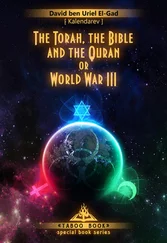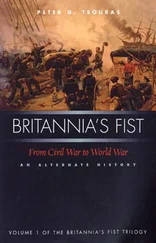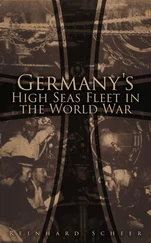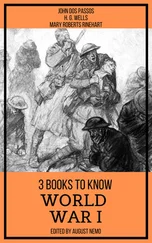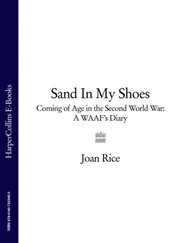5. Hopkins, Australian Armour, p. 64.
6. Advisory War Council Minute 1132, NAA A5954 814/2 folio 700.
7. Chief of Staff’s Report 153, 3 January 1943, NAA A5954 335/8.
8. Advisory War Council Minute 1132 NAA A5954 814/2 folio 700 para 2.
9. Advisory War Council Minute 1135 NAA A5954 814/2 folio 705.
10. The Lee was the American version of the US M3 medium, and the Grant the British version. The British required a rear overhang to the turret to allow a wireless set to be installed, and elimination of the commander’s cupola. It seems strange that sixteen modifications were needed to convert a Lee to a Grant. See Appendix 2.
11. This statement seems to be stretching the truth. Certainly the AC series had its main armament mounted in the turret, but that armament was only a 2-pdr. The Grant was proven in battle, while the AC was still being modified.
12. These figures are rather more optimistic than those provided by Green in May.
13. Colonel G.A. Green was born in Sydney, but served with the British Tank Corps in World War I, where he was awarded the MC. He had been a consulting engineer to the US Secretary of War and, in 1942, joined the Lend-Lease Administration in London. He was regarded as anti-Australian, but it appears that this view was taken only by those who might be adversely affected by his report.
14. Butlin, The War Economy 1942-1945 , p. 76.
15. NAA CP183/1 volume 15.
16. Quoted in Butlin, The War Economy 1942-1945 , p. 76.
17. NAA A5954 587/2 para 85.
18. Butlin, The War Economy 1942-1945 , p. 77, footnote 8.
19. Ibid., p. 77.
20. NAA A5954 587/2 para 76
21. NAA A2671 317/1943.
22. War Cabinet Minute 2979 NAA A5954 809/1 folio 1655.
23. NAA A5954 587/2 para 78.
24. Ibid., para 79.
25. Ibid., para 80.
26. Ibid., para 81.
27. Ibid., para 82.
28. Advisory War Council Minute 1241 NAA A5954 815/1 folio 801.
29. War Cabinet Minute 3300 NAA A5954 809/2 folio 1805, dealing with Agendum 62/1944.
30. NAA A2671 150/1940.
31. War Cabinet Minute 375 NAA A5954 804/1 folio 276.
32. Butlin, The War Economy 1939-1942 , p. 254, footnote 5; John Jensen had had extensive experience in the senior levels of Defence Supply since 1923, and had written the history of munitions production in World War I.
33. Mellor, The role of science and industry , p. 306; A.R. Code was an engineer, and was the Director of AFV Production from 1941 to 1944.
34. Butlin, The War Economy 1939-1942 , p. 78–79.
35. War Cabinet Minute 2428, 14 Oct 1942, NAA A5954 808/2 folio 1453.
36. NAA A2671 404/1942 ‘Defence of Australia’.
37. Advisory War Council Minute 1118 NAA A5954 814/2 folio 685.
38. Hopkins, Australian Armour , p. 126; also AWM54 44/2/10.
39. Ibid., p. 326; also AWM54 44/2/17.
40. Long, The Six Years War, p. 293.
41. NAA A2671 106/1943.
42. War Cabinet Minute 2715, NAA A5954 809/1 folio 1553-4.
43. As pointed out earlier, there was some uncertainty regarding the name of this division. It must be assumed that it was what had come to be called the 2nd Armoured Division.
44. War Cabinet Minute 2810 NAA A5954 809/1folio 1589.
45. This report is included as a supporting document in the file for Agendum 106/1943, NAA A2671.
46. The Allied Works Council had been formed in 15 February 1942. Its Director-General, E.G. Theodore, had ‘the direction and control of the carrying out of works of whatever nature required for war purposes by the Allied Forces in Australia.’ See Butlin, The War Economy 1942-1945 , pp. 142–143.
47. NAA A2671 272/1943.
48. War Cabinet Minute 2969 NAA A5954 809/1 folio 1649.
49. The statement of principles is contained in a document filed as an attachment to War Cabinet Minute 2968, and can be found in NAA A5954 809/1 folios 1660-1665. It has two sections, General Principles and Detailed Priorities and Procedure. There are six sub-sections in the second section, and these are: strength of Australian services, munitions, supplies other than munitions; other needs for the civilian population, works, and essential services.
50. Department of Defence, The Army War Effort , p. 8.
51. Hopkins, Australian Armour , p. 129.
52. Ibid., p. 130.
53. Advisory War Council Minute 1253 NAA A5954 815/1 folios 811-2.
54. Advisory War Cabinet Minute 1270 NAA A5954 815/1 folio 824.
55. NAA CP183/1 Volume 6, War Cabinet Agendum 197/1942 Supplement 4.
56. Butlin, The War Economy 1939-1942 , p. 46.
57. War Cabinet Agendum 197/1942 Supplement 4 Appendix A.
58. NAA A5954 808/2 folio 1520, War Cabinet Minute 2616.
59. Butlin, The War Economy 1939-1942 , p. 47.
60. NAA CP183/1 Volume 12.
61. NAA A5954 809/1 folios 1549-1553.
62. NAA A5954 809/1 folios 1553-4.
63. NAA CP183/1 Volume 12.
64. NAA A5954 814/2 folio 751, Advisory War Council Minute 1185.
65. Wurth, Control of manpower in Australia , p. 32.
66. NAA CP 183/1 Volume 14.
67. NAA A5954 809/1 folios 1602-3, War Cabinet Minute 2843.
68. NAA A5954 809/1 folios 1660-1665.
69. NAA A5954 306/1 ‘Review of manpower situation, October 1943’.
70. NAA CP183/1 Volume 16.
71. NAA A5954 809/2 folios 1695-1703.
72. NAA A2703 53 ‘Minutes of Full Cabinet meeting 23 November 1943’.
73. Butlin, The War Economy 1939-1942 , p. 359.
1. Hopkins, Australian Armour , p. 327.
2. Ibid., p. 328.
3. Department of Defence, The Army War Effort , p. 72.
4. For the detailed specifications of the Matilda tank, see James Bingham, Infantry Tank Mk II Matilda, Armour in Profile No. 15.
5. Department of Defence, The Army War Effort , Appendix B.
6. Ibid., p. 10.
7. ‘B’ vehicle was the term used for unarmoured wheeled vehicles. Excluded from the category were armoured cars, scout cars, half-tracks, and motorcycles. Most B vehicles were fourwheeled, although some of the heavier vehicles were six-wheelers. The four-wheelers could be either four wheel drive (4x4) or two wheel drive (4x2). For any vehicle in the forward areas of an operation, four wheel drive was essential. For more detail, see Forty, British Army Handbook 1939-1945 , pp. 266–280.
8. AWM54 44/2/19.
9. Department of Defence, The Army War Effort , Appendix B.
10. Hopkins, Australian Armour , p. 129.
11. Arthur Bryant, The Turn of the Tide , Collins, London, 1957, pp. 708–718.
12. Long, The Six Years War, p. 324.
13. Nadzab is twenty miles inland from Lae, in the broad Markham Valley. After its capture on 5 September 1943, it was rapidly developed into one of the largest airbases in New Guinea. See David Dexter, The New Guinea Offensives , Australian War Memorial, Canberra, 1961, p. 364.
14. Victor Windeyer was ‘distinguished both as a scholar and a soldier – a combination not uncommon in the history of the Australian Army.’ He commanded the Sydney University Regiment in 1937, the 2/48th Battalion in 1940 (which he led at Tobruk), and in January 1942 he was appointed to command the 20th Brigade, which he led at Alamein. See Dexter, The New Guinea Offensives , p. 330.
15. Landing craft had been developed to make the task of landing troops on a hostile shore less risky. The landings on Gallipoli had demonstrated the need for special craft that could approach the shore, let down a door in their bows, and allow men and vehicles to wade ashore. On some shores they could actually beach, and men could land dry-shod. By 1943 there were several varieties of landing craft, including the Landing Craft Assault (LCA), Landing Craft Mechanised (LCM), Landing Craft Tank (LCT), Landing Ship Tank (LST), and Landing Craft Infantry (LCI). There were also Assault Personnel Destroyers (APDs) and Landing Vehicles Tracked (LVTs). The LST could land 500 tons of men, equipment and supplies, and the LCT 250 tons. The LCI could land 200 men on a beach. For a successful operation it was essential that the Army and the Navy should have extensive joint training in embarking, beaching, and disembarking. See Dexter, The New Guinea Offensives , pp. 272–273.
Читать дальше

